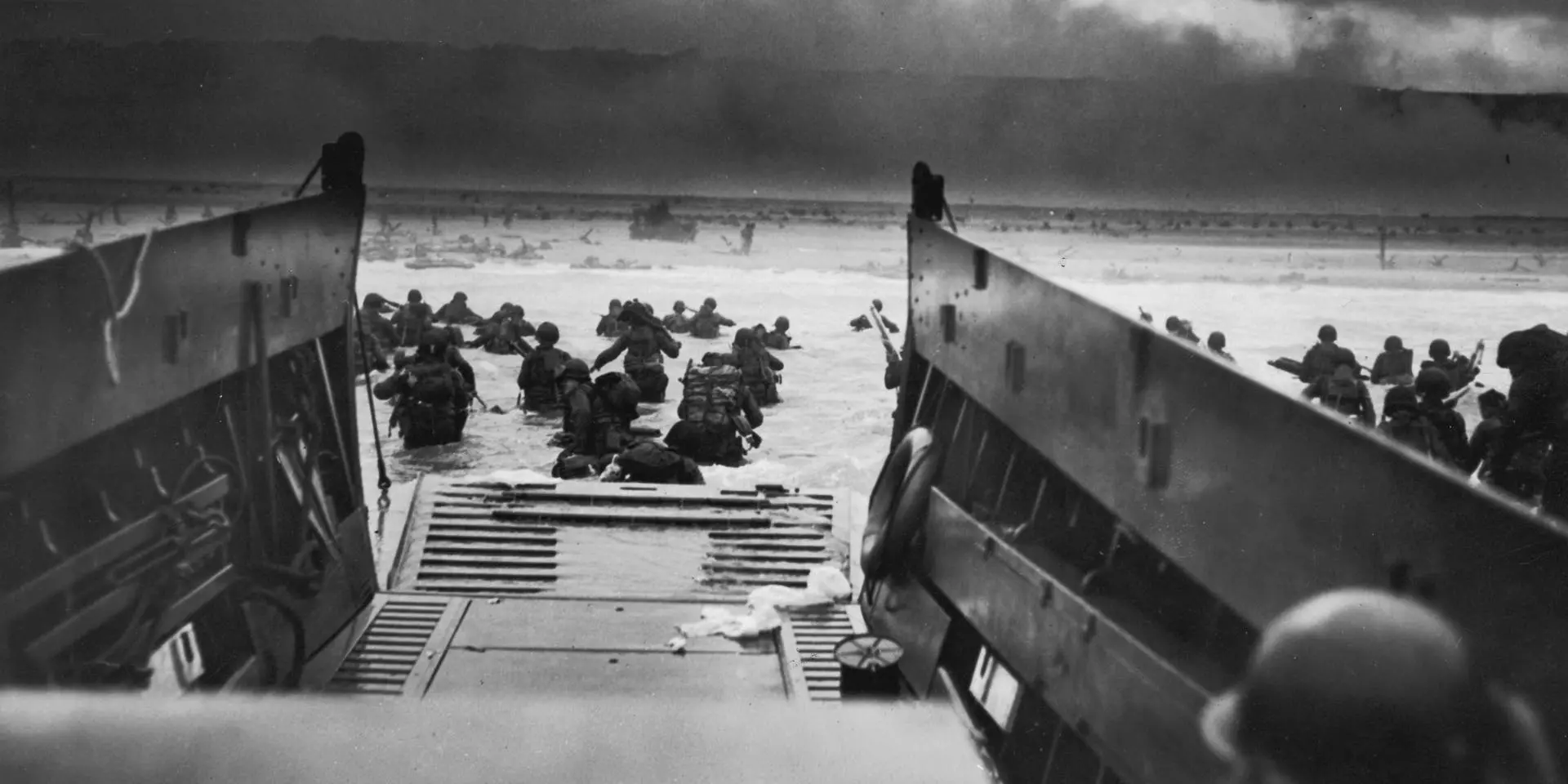
D-Day was the name given to the June 6, 1944 invasion of the beaches at Normandy in northern France. Eight allied countries, including the USA, Canada, United Kingdom, and Denmark all lent troops during this battle. The force of 7,000 ships and landing craft delivered over 195,000 people to five different rendezvous locations along the beaches of Normandy.
Officially, June 6th marked the first day of the assault on German-controlled France, codenamed Operation Overlord, and became known as the largest air- and seaborne invasion in human history. At the end of this operation, the entirety of Northern France would be liberated, and the tides of war would be turned against the Nazi forces. This is why many historians consider this the beginning of the end of World War II.
The beaches of Normandy were chosen for a few different reasons. The beaches lay within air cover range and were far less defended than Pas de Calais, which offered the shortest distance between Great Britain and the European mainland. German forces also expected the Allies to attack the Pas de Calais region. Choosing the beaches of Normandy gave the Allied Forces the element of surprise.
Each assault point had its own codename: Utah, Omaha, Gold, Juno, and Sword. The plan was to have paratroopers cover the flanks while six divisions of troops were to land on the beaches: one Canadian, two British, and the other three composed of U.S. troops.
The goal of the American paratroopers was to protect the incoming troops by causing confusion and chaos, forcing the German troops to focus on them. At the same time, the other Allied soldiers invaded the beaches. Many of the paratroopers in this battle were killed or injured. Despite these losses, their efforts were a major reason for the success of the rest of the operation. Meanwhile, the British and Canadian paratroopers had the goal of securing the left flank of the invasion force, which they accomplished.
D-Day was the largest use of airborne troops up to that time. Paratroopers from the U.S. 101st and 82nd Airborne Divisions, the 1st Canadian Parachute Battalion, and the 6th British Airborne Division were all active in the operation. Over 13,000 aerial troops were flown in from Southern England and the Cotentin Peninsula bases. These troops faced the difficult task of landing behind the line of Nazi soldiers in the middle of the night – five hours before the bulk of the troops would arrive.
The initial landing on D-Day was fraught with confusion, disorganization, and poor implementation. This was especially true of the paratroopers, as many American paratrooper units were scattered when they landed behind German lines. Luckily, and to the troops’ great credit, many were able to adapt. The Allies achieved their objective and successfully turned the tides of the war in their favor.
Five hours after the initial assault started, the largest amphibious force ever gathered in history stormed the cold beaches of Normandy. The American troops landed at Utah Beach and Omaha Beach. The British and Canadian soldiers landed at Juno, Gold, and Sword.
Omaha faced the fiercest fighting. This portion of the beach was positioned near steep cliffs overlooking the flat shoreline. The bulk of German defenses were stationed on this cliffside, and those who left their landing boats were pinned down by machine-gun fire. The troops were pinned down for hours, but by midday, the troops had managed to take Omaha. The loss was significant, however. Out of approximately 35,000 soldiers, 4,700 were killed in battle. By nightfall on D-Day, 175,000 Allied troops were stationed on the beaches of Normandy.
Without the success and sacrifice of the troops on D-Day, World War II may have ended very differently. If this invasion had failed, such an operation wouldn’t have been possible for another year. In this time, Hitler would have likely strengthened his defenses across the Atlantic, making it more challenging to take back France and turn the tides of war. It is important to remember their sacrifice and respect those men that turned the tide in one of the most destructive wars in history.
Mt. Soledad National Veterans Memorial helps keep their memory alive and honors all service members who laid down their lives to protect our freedom and the freedom of the world. Each of our plaques commemorates the achievements and service of veterans nationwide. You can learn more about these brave men and women when you visit our memorial.